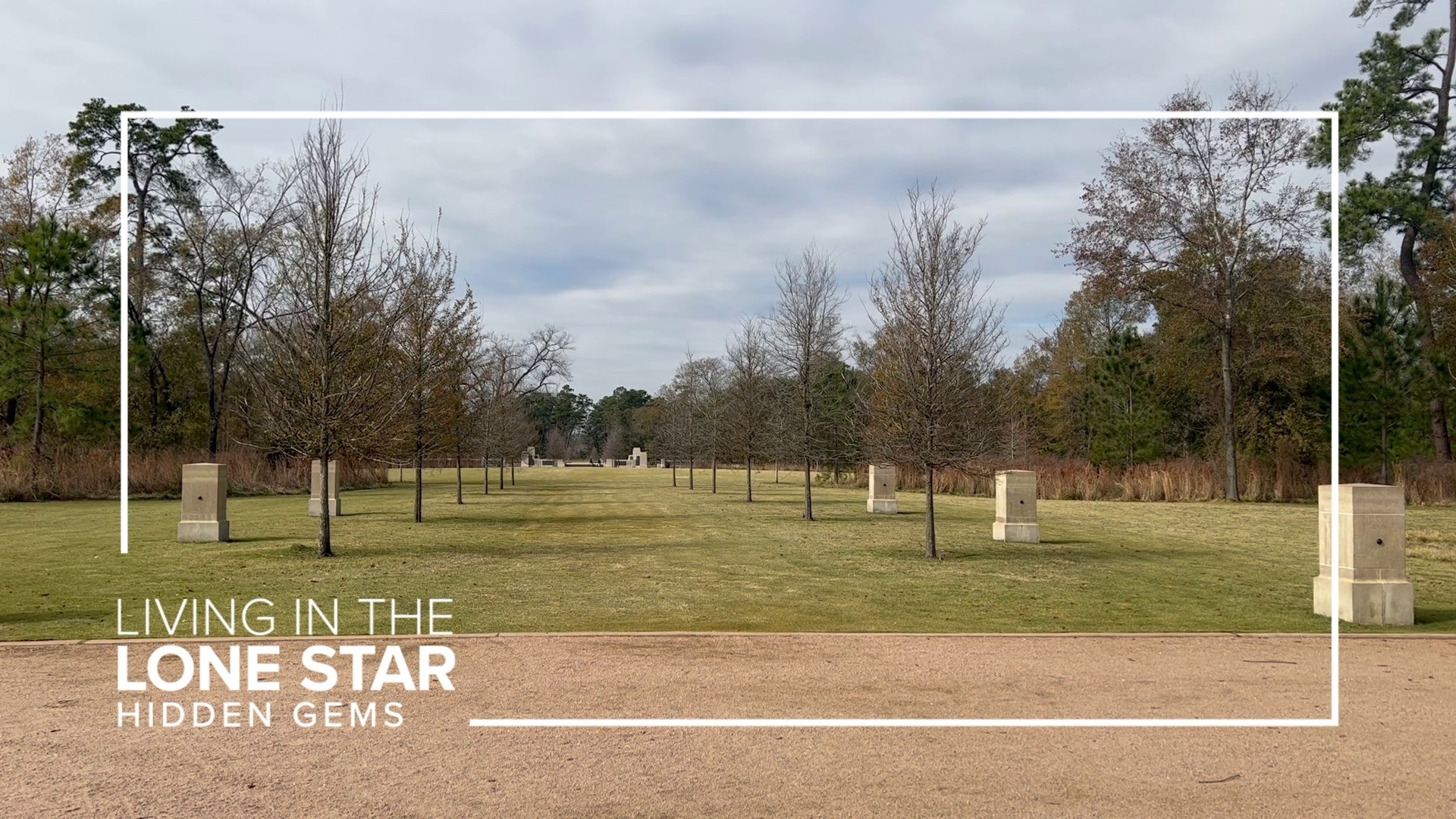HIDDEN GEM: Memorial Park history
It's one of the most popular running trails in the country, but most folks who visit have no idea they’re running and walking by Houston history every day.

Spring break is the perfect opportunity to get out and explore places in Houston you’ve never been before. Our Hidden Gems series is highlighting those spots, including Memorial Park. It's one of the most popular running trails in the country, but most of the folks who visit have no idea they’re running and walking by Houston history every day.
Camp Logan WWI training camp stretched over 7,000 acres
"Prior to being Memorial Park, this had been a military training facility to serve while World War I," shared Shellye Arnold, president and CEO of the Memorial Park Conservancy.
Camp Logan stretched across more than 7,000 acres in Houston and served as home to thousands of soldiers training to fight abroad. When the war ended and the camp shut down, the City of Houston opted to turn 1,500 acres of its footprint into a park.
"And so Memorial Park was named to honor those who served," Arnold said.
Few people know as much about the park’s history as she does. Arnold led the Conservancy through its effort to put together a master plan, which the Houston City Council approved in 2015.
"The master plan contains a number of projects, some of which directly honor those who served here in Memorial Park in what was then Camp Logan," Arnold said.
Eastern Glades Buildings pay tribute to Camp Logan
Some of those projects are already complete.
"Where we’re standing right now was a road that led into Camp Logan," Arnold said. "The way we honor that in this project is with this axis. We have an axis of monuments and an axis of trees. It leads straight down to Hines Lake and then across the lake."
The new buildings that went up as part of the Eastern Glades project are inspired by the tents that housed soldiers at Camp Logan as well.
"It's utilitarian, it's pitched, it's kind of low slung, it's open," Arnold said. "It looks a little temporary, like the tents, but it's not. It's permanent for people to enjoy, for Houstonians to enjoy."
The camp did have some permanent structures, and deep in the trees that surround the loop, you can see their remnants. They're fragments of history, hidden for now.
370th Infantry Awarded regiment trained at Camp Logan
Those bits of cracked foundation aren’t far from the 370th Prairie, named for the 370th Infantry Regiment, an African-American regiment commanded entirely by black officers.
"Because of the discriminatory laws during the time of World War I, it was not allowed to serve with the U.S. military," Arnold said. "It served instead with the French military and was the most-decorated regiment of any in World War I."
Though the regiment was from Illinois, the soldiers trained at Camp Logan, living on the prairie while they did.
"We have been developing this prairie and restoring the site where they camped," sais Arnold." It will be part of our Memorial Groves project to honor all of those who served."
24th Infantry Memorial Groves will highlight injustice
That list includes members of the 24th Infantry Regiment.
"That is one of the tragic stories of Houston's history and of our nation's history," Arnold said.
Comprised entirely of Black soldiers, the 24th Infantry Regiment had served together bravely along the Texas-Mexico border and other locations before it was sent to guard Camp Logan.
"The soldiers came here during a time of great racial strife in the U.S., during a time when communities of black people were being attacked by white mobs in St. Louis and Tulsa," said Arnold. "They also feared for their own safety because they were treated very badly."
On Aug. 23, 1917, they thought they were under attack and fought back in defense of their own lives, Arnold explained. The incident was billed as a riot and 110 soldiers from the 24th were found guilty. Nineteen were hanged, the others received lengthy prison sentences.
"We understand that they were unjustly prosecuted, some unjustly executed," Arnold said. "As we develop Memorial Groves, we will be telling the story of this injustice and thinking about what we can learn as a city and as a nation."
'Artifacts of Memorial Park' Picnic tables could date back 90+ years
Though its origins stem from Camp Logan, Memorial Park has generated history of its own since its creation.
"When you come to a picnic loop, what you might think, ‘Well, those are really old tables. I wonder why they don't replace those tables,’" said Arnold. "They're actually artifacts of Memorial Park and perhaps the nation's history."
Conservation experts believe they were built in the 1930s as part of the Civilian Conservation Corps. That means they’ve been here for going on a century.
"And they are a really important part of Memorial Park's history," Arnold says.
You’ll find them in Picnic Loop, perhaps best known as being where the RodeoHouston trail riders come in to set up camp. That tradition started more than 60 years ago.
"It's part of the park's history. It's part of the city's history. It's part of the region's history," said Arnold.
It's history that’s living and breathing, just like the Houstonians who fill its trails.

